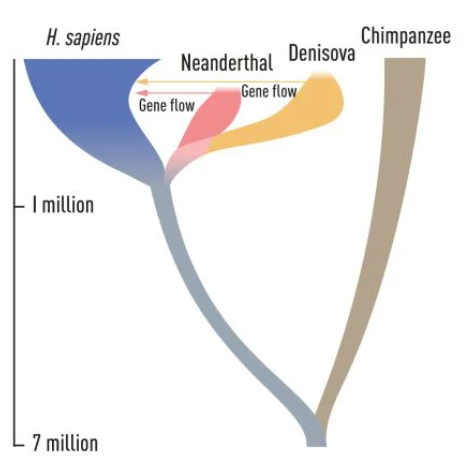ForumIAS announcing GS Foundation Program for UPSC CSE 2025-26 from 19 April. Click Here for more information.
ForumIAS Answer Writing Focus Group (AWFG) for Mains 2024 commencing from 24th June 2024. The Entrance Test for the program will be held on 28th April 2024 at 9 AM. To know more about the program visit: https://forumias.com/blog/awfg2024
Contents
Source: The post is based on the following articles
“Swedish scientist gets medicine Nobel for work on human evolution” published in The Hindu on 4th October 2022.
“Svante Paabo awarded Nobel Prize in Medicine: Mapping Neanderthal genome” published in The Indian Express on 4th October 2022.
What is the News?
Swedish scientist Svante Paabo has been awarded the Nobel Prize for Physiology for the year 2022 “for his discoveries concerning the genomes of extinct hominins and human evolution”.
Note: Incidentally, his father, Sune K Bergstrom, is also a winner of the Nobel Prize in Physiology, 1982, making them only the sixth father-son pair to have won a Nobel each.
About Nobel Prize
| Must read: Facts about Nobel Prize |
About Nobel Prize in Medicine or Physiology, 2022

Svante Pääbo has spearheaded the development of new techniques that allowed researchers to compare the genome of modern humans and that of other hominins — the Neanderthals and Denisovans.
Found the relation between modern humans and Neanderthals: He pieced together the genome sequence of the Neanderthal, modern human’s cousin species that went extinct about 30,000 years ago. His research helped to establish that modern humans and Neanderthals share a common ancestor that lived some 600,000 years ago.
Discovered Denisovans: During this process, he also discovered the existence of an unknown sub-species of the human family, now called Denisovans, who lived around the same time as the Neanderthals.
His research shows that the ancestors of modern humans, Neanderthals and Denisovans co-existed for about 20,000 years, during which they not only interacted with each other but also inter-bred.
For instance, he identified a skeleton of a human whose father was a Neanderthal and the mother a Denisovan.
Found new methodology to extract DNA samples from very old remains: He is credited with developing new and innovative methodologies to extract ‘clean’ DNA from human fossils tens of thousands of years old and reading the genetic information contained therein.
His methodologies provided the essential breakthrough for his work on the comparison of Neanderthal genomes with the modern man
What is the Significance of Svante Paabo discovery?
a) He replaced the indirect evidence in the genetic studies of archaeological remains with direct observational evidence. Earlier, scientists were studying the genomes of current human beings and extrapolating the information into the past. It is called deduction, which involves uncertainties.
b) He realised that one particular skull bone, called petrous, preserves DNA better than the rest of the body. This was a very useful revelation.
c) Establishing the genetic evolution of human beings can have important implications for medical science. For example, 1) it can reveal how the human immune system reacts to infections, 2) He showed that one particular gene from the Neanderthals aggravated the risk of severe diseases among Covid patients and another gene offers protection against severe Covid.
What are the limitations of Svante Paabo discovery?
Not effective for tropical climate: He was dealing with skeletal remains in Europe. Unlike in tropical climates in India, bones and skeletons are much better preserved in colder climates.




